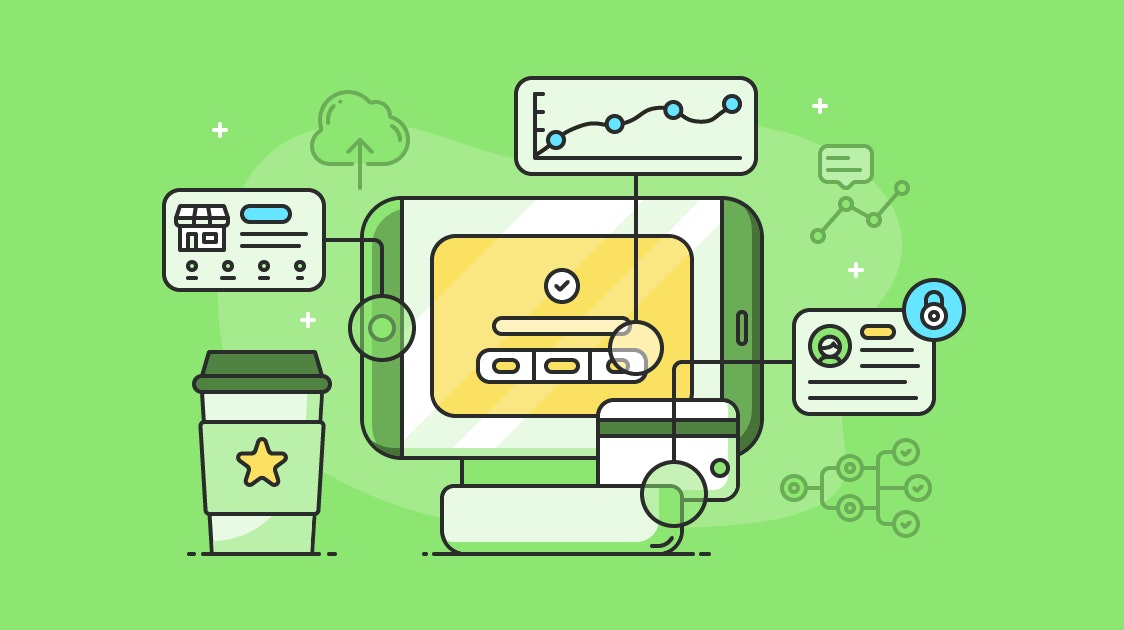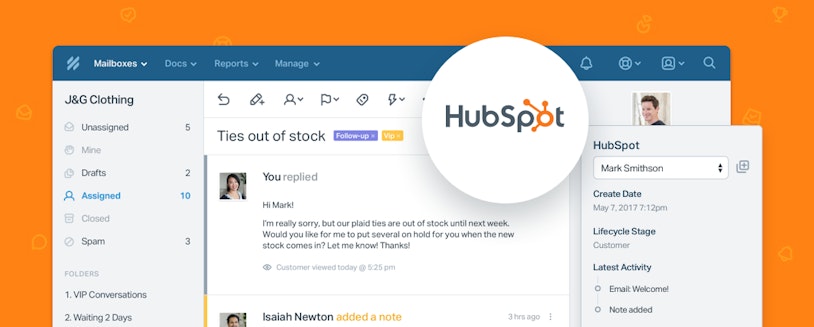Customer relationship management and CRMs are not the same thing.
Customer relationship management is what you do: how you work with, serve and support your customers. It is a strategy for building relationships with your current and potential buyers and understanding their needs so you can help them be successful through your product.
Sound time-consuming? Think about it this way: Customer experience is the most essential element of your growth strategy and just plain the right way to do business. Companies large and small can no longer afford to ignore it.
This is where CRM software comes into play. CRMs enable relationship and contact management at scale through data collection, segmentation, automation and analytics. Keap sums it up nicely: “The core function of CRM is contact management. It gives you the power to actively track and segment a much larger volume of contact variables.”
“When it works,” according to Harvard Business Review, CRM software “allows companies to gather customer data swiftly, identify the most valuable customers over time, and increase customer loyalty by providing customized products and services.”
When it works is the operative phrase. That’s where the struggle gets real.
The problem with both CRM strategy and software is twofold. First, the software industry pressures businesses to adopt tools for manufactured problems that they want business owners to think exist. Second, and as a result of the first problem, too many businesses begin with tools, not their customers, so their strategy is built around an object rather than the humans they are trying to serve.
Your success should be based on making your customers successful.
It’s no wonder why as far back as a 2002, Gartner found that 55 percent of all CRM projects don’t produce results, and why most people think of tools when they talk about CRM. What’s old is new again.
Mo McKibbin, in Customer Success here at Help Scout, emphasises the importance of a customers first, tools second approach:
A successful CRM serves both the business and their customers. But all too often, automation is used solely for cutting time and costs, which comes at the customer’s expense. You have to start with your customer experience strategy, then figure out what tools you need to support it.

Mo McKibbin
The reality is that success in the beginning is much simpler, and it’s achievable for companies of all sizes. It starts with supporting your customers and building relationships with them. Answer their questions, be available when they need you. Ask them questions, build personas, experiment, establish a point of view of customer success at your company. Once you have that, you’re ready to consider a CRM, because you’ll know what you actually need from it. And as a result, your investment will reap meaningful ROI, quickly.
Will the real CRM please stand up?
You’ve opened the doors to your business, gotten your product to market, made your dream a reality. Now it’s all about your customers. How are you going to manage their questions? Make sure no message falls through the cracks, track common questions and problems so you can make proactive business decisions, maintain high-quality service, and prevent confusion among your own team (if you have one).
“In today’s world, you need to have a customer engagement process right from the very beginning,” says Brent Leary. “If you start blogging and somebody likes what you're writing about and they want to learn more, you have to have an engagement process that helps you respond quickly and effectively so you can keep the momentum going.”
The good news is that you don’t actually need expensive software in the beginning. Using free or low-cost tools enables you to delay more expensive investments until you really need them.
Support tools like email or help desk software are great options for supporting customers while you figure out your overall customer experience and growth strategy. They help you start building relationships with your customers while avoiding expensive administration investments. And they avoid the pitfalls of more archaic CRM solutions that Leary identifies:
“Consider the confusion that’s associated with using spreadsheets for tasks they’re not designed to handle. What if your sales process suffers as a result? Opting for spreadsheets to tackle CRM for the time being may actually cost an organization customers — and the sad part is, you’d probably never know it.”
Break it before you buy it
You know you’re ready to consider a CRM when you start asking your customers these questions on a regular basis:
What was your last order?
Have you spoken to anyone else from our company?
What's your phone number?
What plan are you on?
How long have you been a customer?
When these questions present themselves, you’ve reached a point where you’re anticipating your customers’ needs and can be more proactive. That’s when you know you’re ready to evolve how you manage your customers, and when CRM software becomes a worthy consideration.
The better you understand your customers, the more responsive you can be to their needs.
The good news is that CRM software can be layered on top of your existing customer tools, like a strong email service provider or a help desk (homegrown or purchased), making the transition easier and less costly.
You’re ready for a CRM — what now?
With so many options, bells and whistles among CRM software options, it’s easy to get lost right when you’re getting started. The best approach is to outline your goals at the outset.
1. Establish your business goals
Start with three high-level pieces of information:
Revenue goals: How much money do you want to make this year?
How many customers do you have right now?
What resources do you have (budget and employees)?
Before you begin formulating any numbers, however, consider digging deeper to consider:
The cost to support each new user
The cost to onboard each new user
The lifetime value (LTV) of each new user
How much churn they can expect
Using these calculations will help you avoid setting sales targets based on numbers rather than humans, and will instead promote practices that are customer-centric and work within your definition of customer success.
As Charlie Brown writes in Harvard Business Review, “Find metrics that measure relationship health, not just sales.”
Ultimately, this formula enables you to create incentives that will attract customers who will actually get value from your product. They force your entire company to rethink the relationship between sales and support from the ground up, and use them to refocus activities on serving the customer.
2. Define customer relationship management at your company
Whether your company has one, five, 10, or 50+ people, you need to know what success looks like for your customers. What kind of service will you provide? How will you approach sales?
Kate Leggett outlines it for Forrester:
“Forward-thinking companies invest in customer success by articulating a customer success strategy and high-level measures of success as well as forming customer success teams that have clear retention metrics and revenue goals for accounts under management. They use CRM data in conjunction with finance and product usage data to gauge a customer’s health and intervene when surfacing signs of distress.”
3. Determine what CRM features you need to support your strategy
HubSpot’s great first-time CRM buyer’s guide helps identify the basic features every CRM should have:
Contact management
Deal stages
Daily dashboard
Task management
Content repository
Automated data capture
Reporting
Mobile app
Integration with marketing automation
Visualized another way, this grid shows the basic info managed in a traditional spreadsheet alongside some of the functional benefits a CRM adds to your data:
| Spreadsheet | CRM |
|---|---|
Name | Lead scoring based on triggers |
Company Size | |
Phone Number | Multiple contacts within a company |
Website | Contact Title |
Address | Notes History |
Type of Customer | Current sales pipeline stage |
Date Purchased | Detailed reporting |
While every company and team will vary in their needs, three features are essential to customer experience that benefits all stages of the funnel.
Conversation history: To maintain a consistent experience for your customers, your CRM should talk to your help desk (and vice versa) through an API integration. This contextual data helps your sales team make better recommendations for current and potential customers. For example, the Help Scout + HubSpot integration automatically adds Conversation activity to your HubSpot timeline, so your support and sales can stay aligned without adding a step to their process.
Audience targeting 2.0: With more sophisticated technology comes greater expectations from customers that the content you’re sending them is relevant and timely. And the CRM you use should enable you to meet those expectations. In 2017, says CMS Newswire, “we will witness a surge in technologies for real-time hyper-targeting, catering to micro-segments of customers and embodying the vision of contextual marketing: targeting every customer with the right message, on the right channel, at the right time.”
Multichannel support: According to a recent Forrester report, the average adult is connected to the web by 4.5 devices, making it even more essential for CRM software to prevent interruptions to the user experience across channels that me be managed individually.
Support-driven growth
You don't need a CRM to be successful at customer relationship management. It’s inside the heads of your customer service team, who are the front line of relationship building with your customers. People who contact the support team often share information far beyond the practical details of products and features, explaining their broader business goals, their frustrations, and their fears.
Stop thinking about your customer experience as the tools you use to support your customers, and start thinking about your customer experience as the relationship you build between your company and the people relying on you.
A software CRM rollout should integrate with your help desk and the other tools you use. That way, customer information can be shared across teams to provide a more personalized and holistic sales, marketing, or account management experience.
“With the right framework in place,” says Mat Patterson, Help Scout Customer Evangelist, “companies can create a consistent customer experience, all the way from first marketing touches to ongoing support, which will help your company stand out from the competition.”
Having CRM details inside your help desk is incredibly valuable for support teams, too. A competent, accurate answer to a customer’s question is great, but an answer that takes the customer’s individual situation into account and is adapted for their specific needs is much more powerful at building loyalty and customer success.
Why bother with all this?
Bad customer service costs companies money — both lost revenue from churn and lost potential revenue from customers who fall out of the sales funnel.
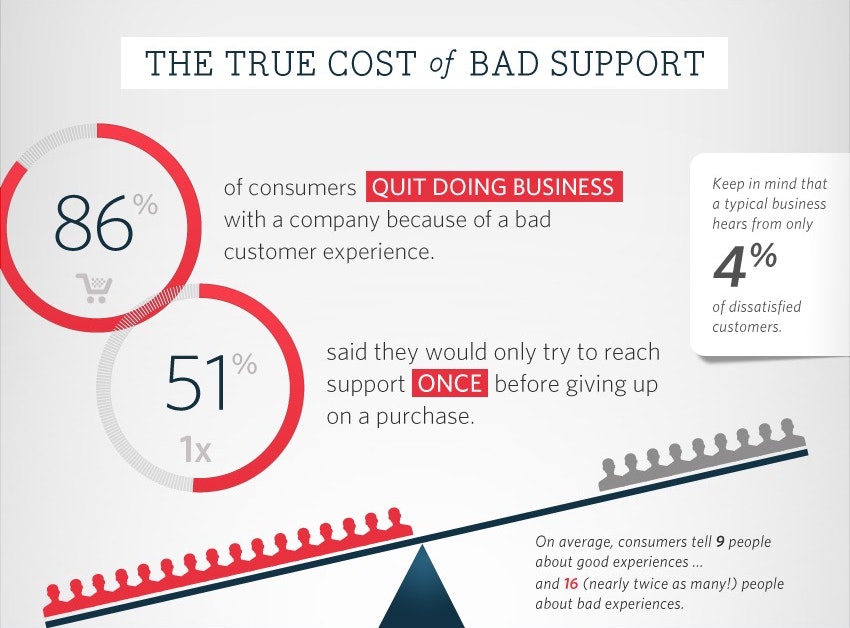
“Mercedes-Benz was sold in the UK through a franchised network of some 138 dealerships. Each of these was autonomous, with the exception of three dealerships owned by the distributor DaimlerChrysler UK (DCUK). DaimlerChrysler had relatively little control over relationships between dealers and customers. All dealers managed their own relationships including customer research, database management, acquisition and retention processes. Although the technical quality of the product was highly regarded, customers complained that the service that they received was not of the same high standard. This translated into declining customer satisfaction and increased defection.”
— Customer Relationship Management Case Study: Mercedes Benz
Good customer service increases retention and makes upselling a benefit, not an interruption. “After observing a few hundred thousand pricing studies at Price Intelligently,” says CEO Patrick Campbell, “we started to notice that the customers of our customers known for phenomenal service appeared to be willing to pay much more than the customers of competitor products.”
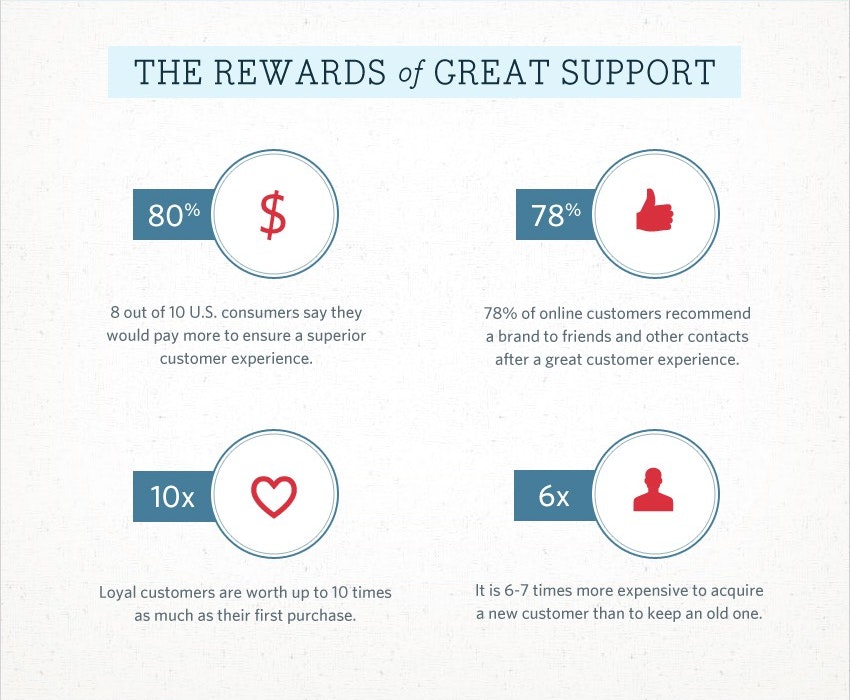
By keeping the focus on our customers — rather than the sale — we succeed when our customers get more value out of Help Scout over time.
Good customer service also increases word-of-mouth:
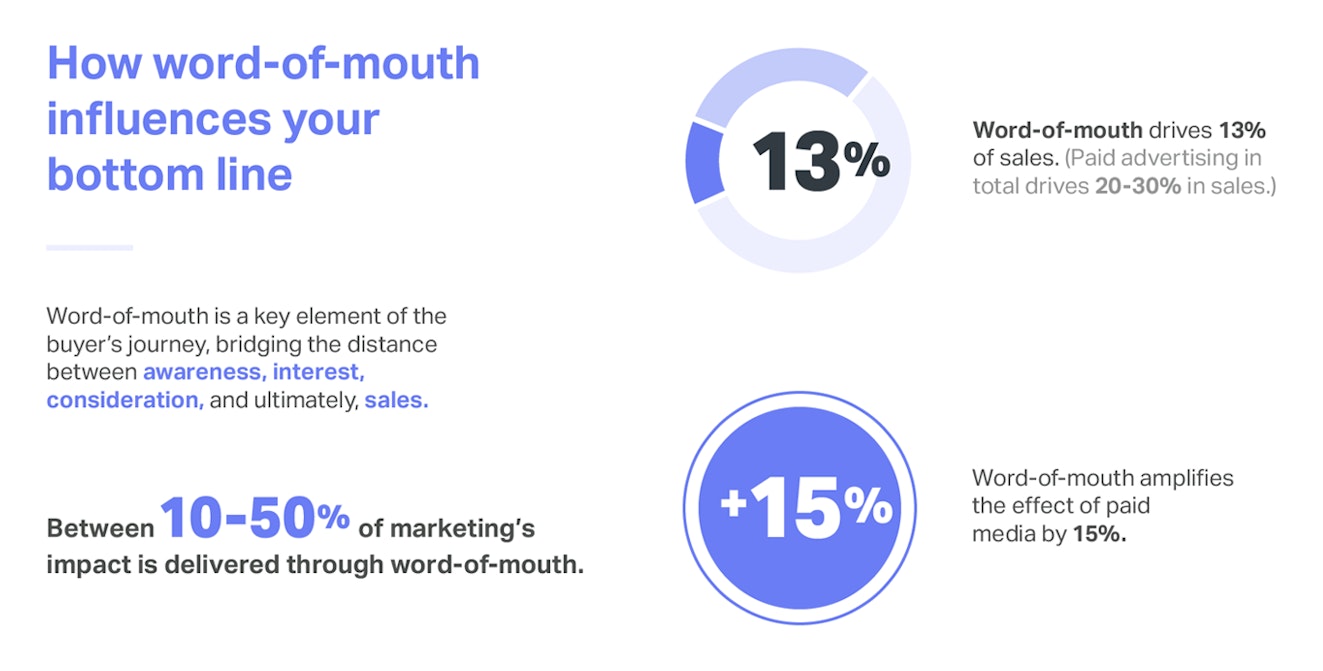
The future of CRM tools
The ultimate value of a CRM does not lie in the capturing, storing or organizing of information. The value lies in how information is understood and applied by the business to future customer interactions.
The future of CRM tools is in making that information easier to understand and apply. We’ll see deeper integrations with marketing automation, so each customer has an ongoing experience tailored just for them. AI will suggest the most likely answer for any particular customer, given everything already known about them.
Gartner predicts that “We are in an age of convenience, where customers — whether they be defined as customers or citizens, students, patients or partners — turn to the enterprise to provide customer service that is convenient, intuitive, immediate, and on the channel of their choosing.”
Applied carefully in multiple areas, CRM data is what takes personalization beyond “you can make your background a different color” — into a custom experience that is vastly more valuable for your customers.

